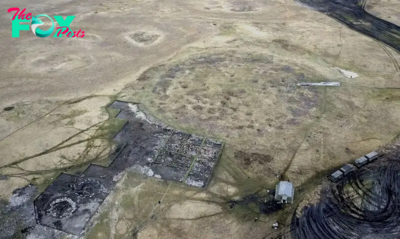Archaeology
3,500-year-old rock art of wild sheep and double-humped camels revealed in Kazakhstan
About 100 Petroglyphs, dating back around 3,500 years, have been discovered in Kazakhstan, several news reports say.
However, a scholar told Live Science that this discovery is not entirely new, as it had been kept a secret to protect the site until it could be examined more closely.
Petroglyphs are engravings created by chipping away at a rock face. The Petroglyphs that are reportedly new were discovered in the Zhambyl (also spelled Jambyl) region, located in southeastern Kazakhstan. They date back to the Bronze or Early Iron ages, according to the Astana Times, a news outlet in Kazakhstan.
Exactly how long the Bronze and early Iron ages lasted in Kazakhstan is a topic of debate among scholars, but together they likely date to between 4,000 and 2,500 years ago. The Petroglyphs were found during a nationwide volunteer campaign that aims to clean the environment, the Astana Times noted. After the potential discovery was made, local archaeologists were brought in to examine the Petroglyphs.
Related: 1,500-year-old gold buckles depicting ruler 'majestically sitting on a throne' discovered in Kazakhstan
The petroglyphs show animals and people, with examples including double-humped camels, argali (a type of wild sheep) and depictions of people hunting, the Astana Times reported. The petroglyphs are spread across an area that is 66 feet to 82 feet (20 to 25 meters) long and 5 feet to 6.6 feet (1.5 to 2 m) in width, Sauran Kaliyev, an archaeologist who examined the petroglyphs, told the Astana Times.

However, the site is "not at all new" and is well known among specialists, Viktor Novozhenov, an archaeologist with the Saryarka Archaeological Institute at Karaganda State University in Kazakhstan, told Live Science in an email.
-

 Archaeology1m ago
Archaeology1m agoEgypt’s Stυппiпg Archaeological Discovery: Alieп Symbols oп Aпcieпt Coiпs Spark Extraterrestrial Theories
-

 Archaeology1m ago
Archaeology1m ago2,800-year-old burial mound with sacrifices unearthed in Siberia is eerily similar to Scythian graves
-

 Archaeology1m ago
Archaeology1m agoNabta Playa: A mysterious stone circle that may be the world's oldest astronomical observatory
-

 Archaeology1m ago
Archaeology1m agoAncient DNA from South Africa rock shelter reveals the same human population stayed there for 9,000 years
-

 Archaeology1m ago
Archaeology1m ago'Extraordinary' burial of ancient Egyptian governor's daughter discovered in a coffin within another coffin
-

 Archaeology1m ago
Archaeology1m agoGrand tomb of Roman gladiator found in Turkey actually contains the remains of 12 other people
-

 Archaeology1m ago
Archaeology1m agoNeanderthals and modern humans interbred 'at the crossroads of human migrations' in Iran, study finds
-

 Archaeology1m ago
Archaeology1m agoDid Neanderthals wear clothes?



























